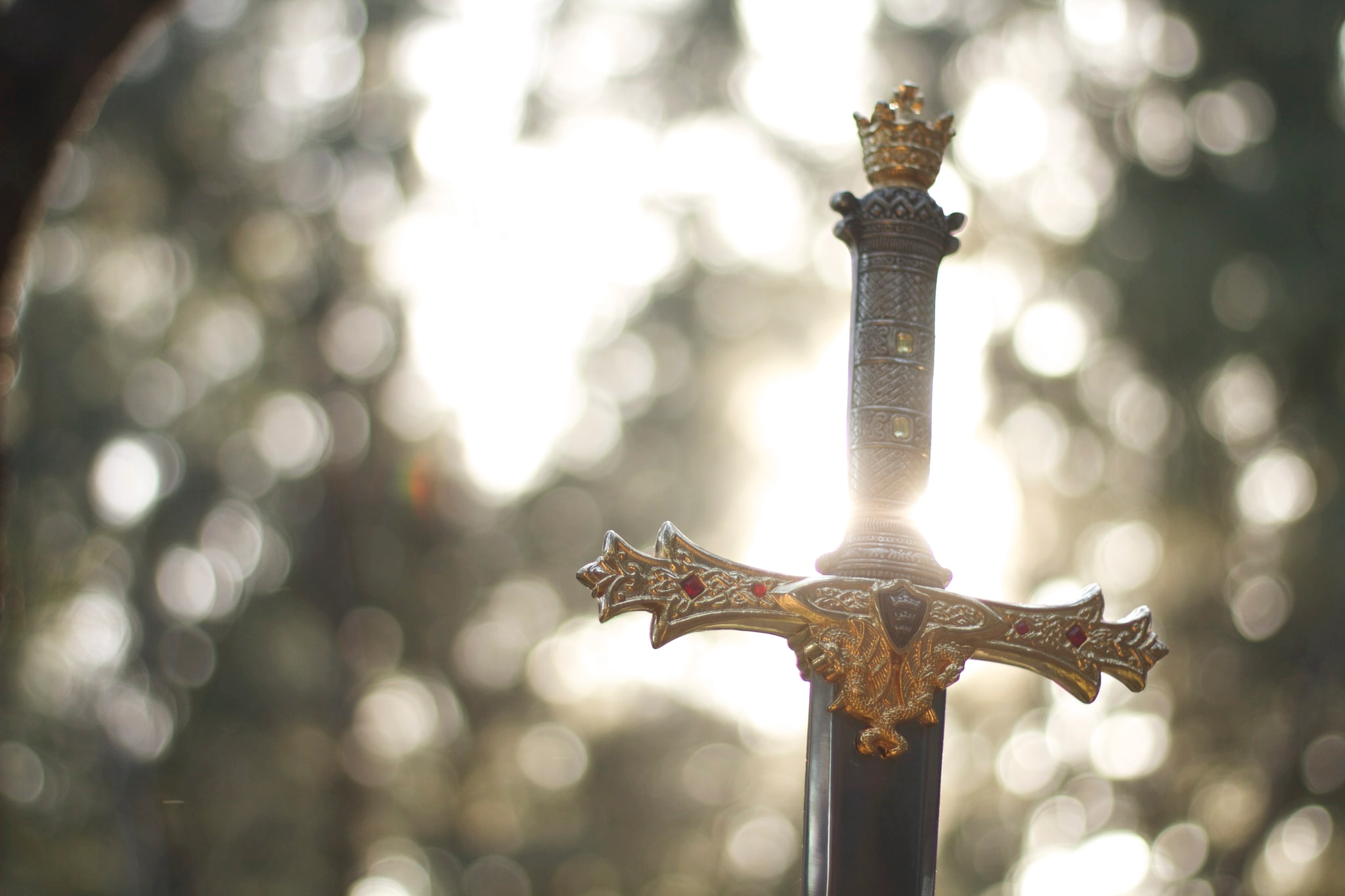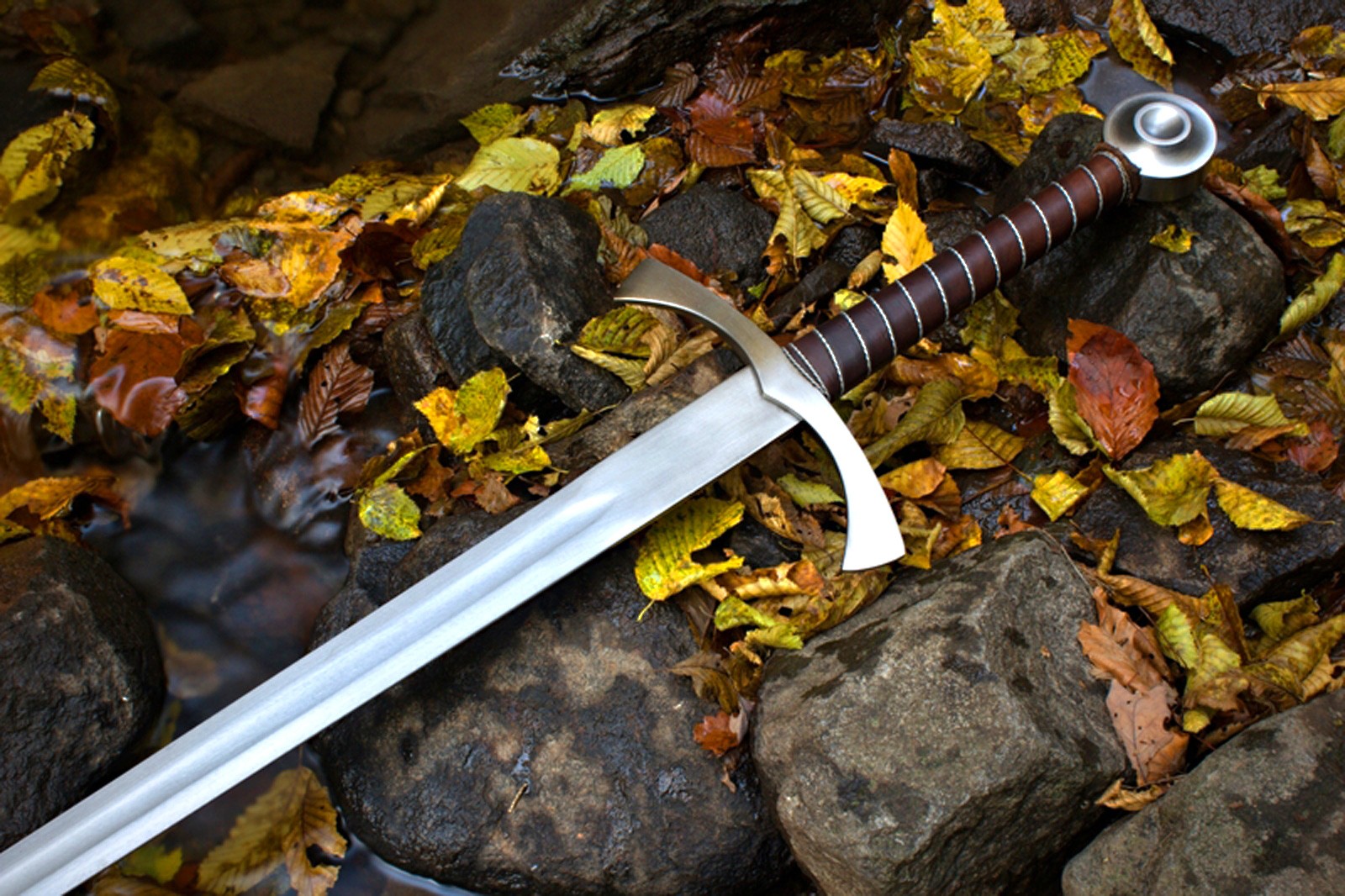History and Cultural Significance

The sword, a timeless weapon and symbol of power, has played a pivotal role in human history and culture. Its origins can be traced back to the Stone Age, where rudimentary stone blades served as both tools and weapons. As civilizations evolved, so did the sword, transforming from a simple tool into an object of art, prestige, and cultural significance.
In ancient Egypt, swords were symbols of power and status, often adorned with intricate designs and precious metals. The Greek hoplite wielded the xiphos, a double-edged sword that was instrumental in their military dominance. The Roman gladius, with its distinctive leaf-shaped blade, became synonymous with the might of the Roman Empire. In Japan, the katana, a curved, single-edged sword, became a symbol of samurai honor and tradition.
Swords have also held deep mythological and symbolic meanings. In Norse mythology, the sword Mjölnir was wielded by the thunder god Thor, representing his power and protection. In Arthurian legend, the sword Excalibur symbolized the rightful rule of King Arthur. The sword has often been seen as a phallic symbol, representing male power and virility.
Beyond warfare, swords have also played a ceremonial role in various cultures. In ancient Rome, the gladius was used in gladiatorial contests, where it became a symbol of both entertainment and brutality. In Japan, the katana was used in seppuku, a ritual suicide performed by samurai to preserve their honor.
In modern times, swords continue to fascinate and inspire, whether in historical reenactments, martial arts, or popular culture. They serve as reminders of our past, symbols of power and courage, and objects of enduring cultural significance.
Types and Styles: Sword Meaning

Swords, with their varying designs and functionalities, have played a significant role in human history. Different types of swords have emerged over time, each tailored to specific purposes and combat styles.
The classification of swords can be based on blade shape, size, and intended use. Longswords, with their extended blades, were wielded by knights and warriors in medieval battles. Short swords, such as daggers and dirks, were designed for close combat and concealed carry. Rapiers, with their slender blades and intricate guards, were favored by duelists and fencers for their precision and agility. Sabers, with their curved blades, were commonly used by cavalry for their ability to deliver powerful slashing attacks.
Notable examples of famous swords include the Excalibur of King Arthur, the Zulfiqar of Ali ibn Abi Talib, and the Katana of samurai warriors. Each of these swords holds a unique place in history and popular culture, symbolizing power, honor, and skill.
Craftsmanship and Techniques
Sword meaning – The creation of a sword is a testament to human ingenuity and artistry. It requires a deep understanding of metallurgy, meticulous craftsmanship, and a keen eye for detail. The materials and techniques used in sword making have evolved over centuries, but the fundamental principles remain the same.
Materials
The most important material in sword making is steel. The quality of the steel determines the strength, sharpness, and durability of the blade. Traditionally, swords were made from high-carbon steel, which is harder and more brittle than low-carbon steel. However, modern swords are often made from stainless steel, which is more resistant to corrosion and easier to maintain.
Forging
The first step in sword making is forging. The steel is heated in a forge until it becomes incandescent, then hammered into shape using a variety of tools. This process requires great skill and precision, as the shape of the blade must be carefully controlled.
Heat Treatment
Once the blade has been forged, it is heat treated to improve its properties. The blade is heated to a high temperature, then quenched in water or oil. This process hardens the blade and makes it more durable.
Blade Sharpening
The final step in sword making is blade sharpening. The blade is ground and polished using a variety of abrasives. This process creates a sharp edge that is capable of cutting through flesh and bone.
Decoration, Sword meaning
In addition to their functional qualities, swords are often decorated with intricate designs. This can be done using a variety of techniques, such as etching, engraving, and inlaying. Etching involves using acid to create a design on the blade, while engraving involves using a chisel to carve a design into the blade. Inlaying involves setting pieces of other materials, such as gold or silver, into the blade.